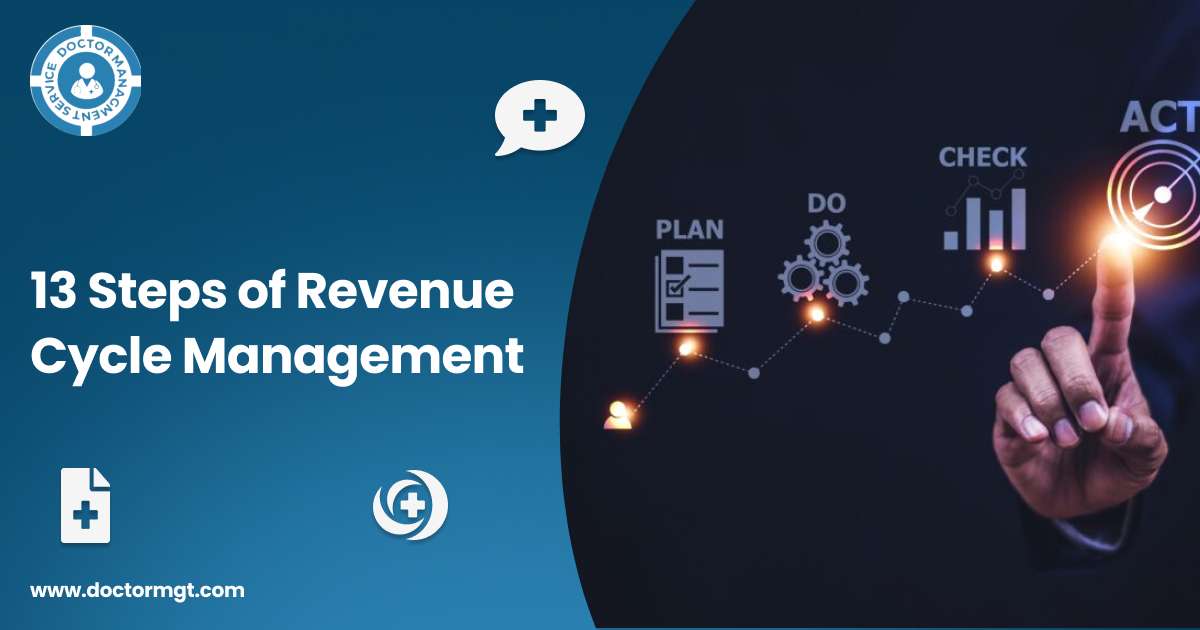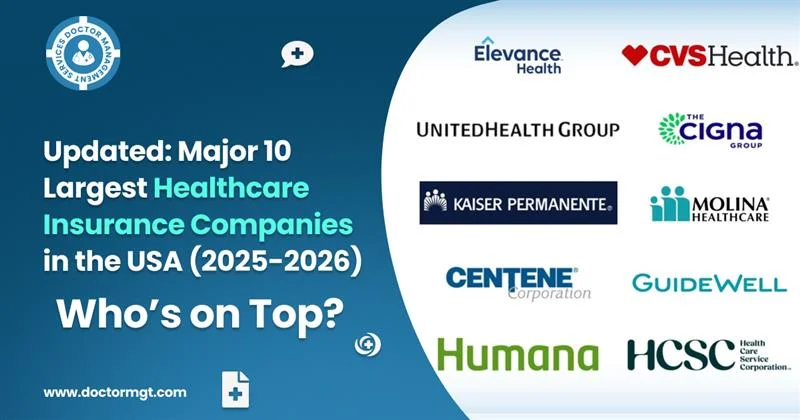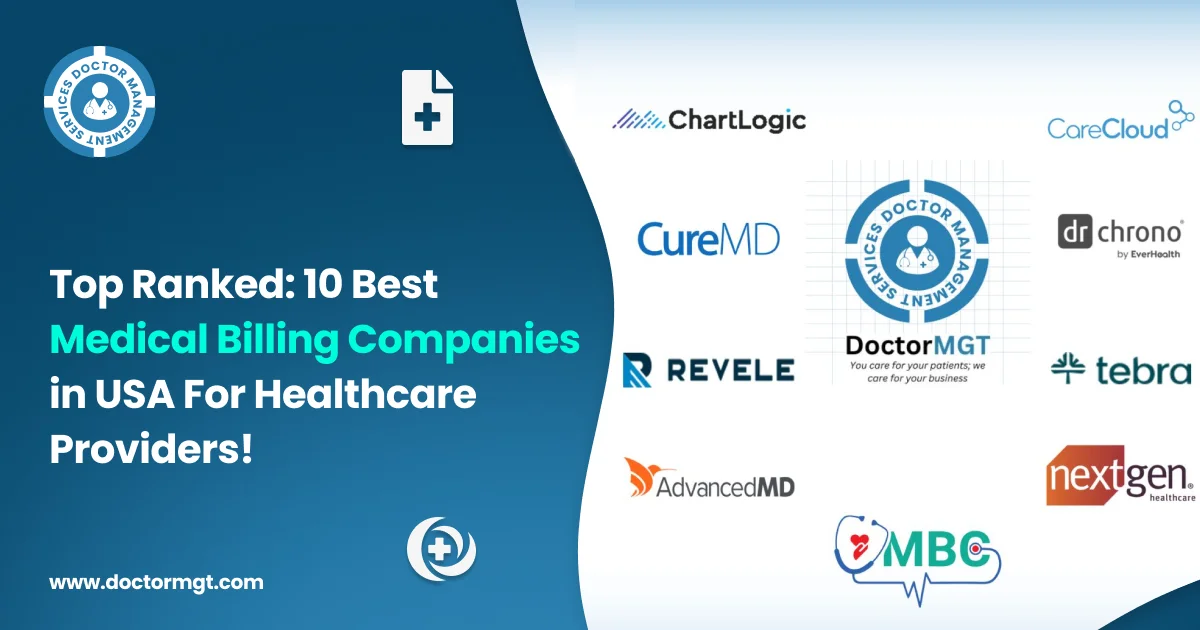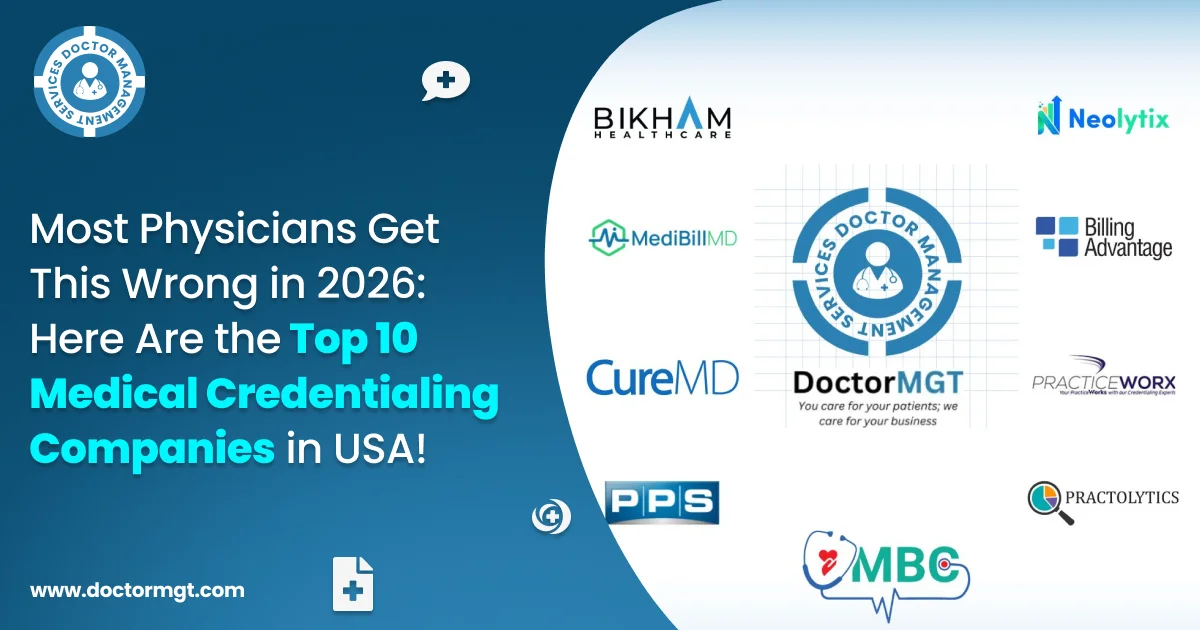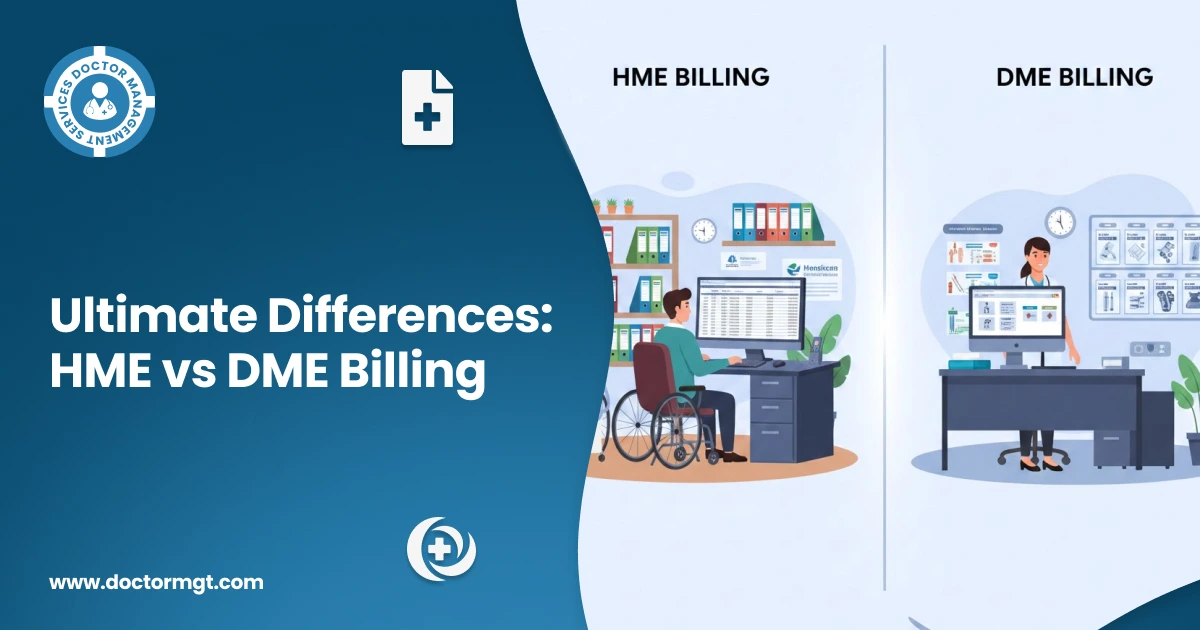Apparently, Revenue Cycle Management (RCM) are three simple words but eventually, these words are a backbone for financial stability in the healthcare industry. Many healthcare providers are still struggling to understand this complex process of maintaining the financials of their practice.
Basically, revenue cycle management is like an engine that keeps your practice running smoothly. It makes sure you get paid for the hard work you do, without unnecessary delays or hassles. Moreover, the RCM cycle in medical billing integrates the daily influx of clinical and administrative information into hospitals, clinics, and healthcare centers.
In medical billing services California, revenue cycle management has its own significance for healthcare providers. Because the doctors of the USA now know that understanding RCM cycle steps is the first step towards the success of medical practice.
Let’s dive in…
Optimizing Revenue Cycle Management with 13 Proven Steps
In the following section, we are going to cover the 13 most important components of healthcare revenue management in detail.
1. Patient Pre Registration
Before even the patient steps into your practice, the RCM starts functioning with pre-registration of the patient. In the initial step, gather all information related to the patient and its eligibility. Dully verify all collected information before moving forward.
Accurate and complete information during this process makes billing and reimbursement smoother and reduces administrative errors and claims denial.
| Facts and Figures Time Savings: Studies show that pre-registration can reduce patient check-in times by up to 50%. This means patients spend less time waiting and more time with their healthcare providers. Error Reduction: Pre-registration can decrease administrative errors by up to 30%, leading to fewer claim denials and faster payment processing. Patient Satisfaction: According to a survey by Accenture, 77% of patients are more likely to return to a healthcare provider that offers online pre-registration and other digital services. Cost Efficiency: Automating pre-registration processes can reduce administrative costs by up to 20%, freeing up resources for other critical areas of the practice. Insurance Verification: A report from the Medical Group Management Association (MGMA) indicates that practices with a robust pre-registration process see a 15% reduction in insurance claim denials. |
2. Eligibility Verification
Verifying eligibility before scheduling an appointment is crucial to avoid denied claims and for optimal revenue flow. Insurance coverage verification involves confirming the area of coverage and benefits before starting any treatment.
In the current dynamic healthcare landscape start using real-time insurance verification tools for immediate confirmation. Also regularly align insurance verification protocols to the happenings in industry trends or compliance regulations.
3. Registration
Patient registration is the process of collecting and confirming all necessary patient information before scheduling an appointment. At this point, medical practices collect all required personal details, contact information, insurance information, and any necessary consent forms.
For efficient claim processing correctly registering a patient is a must. It’s essential to providing high-quality care and upholding a healthy revenue cycle since it creates the patient-provider relationship and provides the framework for correct invoicing and payment.
4. Charge Capture
Appropriate charge capture guarantees that all provided services to patients are properly documented and billed. This step of the RCM cycle comprises recording and coding all procedures, treatments, and supplies used during patient visits.
During the charge entry process in medical billing healthcare providers record information about their various services to patients and subsequently send the charges to insurance companies. This metric is significant in revenue cycle management especially in personal injury billing because it ensures that hospitals obtain full reimbursement from their payers.
It is an essential component of providing great care and sustaining a healthy revenue cycle because it builds the patient-provider relationship and lays the framework for correct billing and payment.
5. Coding
If a healthcare provider wants to acquire maximum reimbursement, accurate and up to codes are vital to properly project the scope of treatment the patient has received. Leverage coding software to assist with accurate code selection and reduce manual errors.
| Facts and Figures Error Rate: According to the American Medical Association (AMA), the error rate for medical billing and coding can be as high as 7-10%. These errors can lead to significant financial losses for healthcare providers. Claim Denials: Medical Group Management Association (MGMA) reports that about 50-65% of claim denials are related to incorrect coding. Coder Shortage: A survey by the AAPC (American Academy of Professional Coders) found that 55% of healthcare organizations face challenges in hiring qualified medical coders, impacting the efficiency and accuracy of their billing processes. Productivity: Experienced coders can process up to 200 medical records per day, but this number can vary widely depending on the complexity of the cases and the coder’s expertise. Training and Certification: Certified Professional Coders (CPCs) tend to have higher accuracy rates and productivity compared to non-certified coders. The AAPC notes that certification can improve a coder’s accuracy by up to 20%. |
As incorrect coding can adversely impact practice receivables, it is worth investing in hiring an expert medical billing company that can handle denials. Professional medical coders are well-versed in translating medical diagnoses, procedures, services, and equipment into universal CPT, ICD codes, and modifiers.
6. Claim Submission
Timely submission of a clean claim to insurance companies for the rendered medical services is another important step among RCM cycle steps. Consider it as a gateway to reimbursement. Providers can submit claims manually as well as electronically.
Here, it is worth noting that electronic claims have a lower error rate because the system cross-checks for errors before the submission of the claim. The foundation of all coding in the process pertains to accurate coding. Sticking to those payer pre-requisite requirements alongside proper documentation would help the providers reduce the likelihood of a denial.
7. Claim Adjudication
Now it’s the time when insurance companies evaluate submitted claims and determine the right compensation based on the patient’s coverage. Timely and accurate claim adjudication is imperative for medical facilities to receive the revenue they deserve, enabling them to continue delivering quality care with financially stable practice.
8. Payment Posting
Upon receiving payments from payers, the entire transaction is documented by posting the payments to the accounts. This critical process requires precision to ensure accurate tracking of payments, adjustments, and monitoring of patient balance.
Ensure that you send claims reimbursements and payments to the proper patient accounts as soon as they arrive at the clinic. Look into any irregularities or underpayments, and ensure that your clinic is processing payments appropriately and efficiently.
9. Denial Management
Denial management is a critical aspect of revenue cycle management. Every medical facility should regularly audit their denials as it helps in identifying the root cause of denied claims. This includes everything from revisiting coding practices to verifying medical needs.
If a healthcare facility does not handle denied claims promptly, it might end up in a substantial revenue loss. Therefore, the refusal should be timely taken up, to rectify the mistakes and an appeal against such claims. Be vigilant to cover all aspects as this may involve anything from medical records to analyzing coding methods.
10. Account Receivable Management
To boost your collections, proactively following up on any outstanding accounts receivable has significant importance. Accelerate follow-ups based on the age of outstanding accounts and how likely they are to make payments without any trouble.
Improve this facet by implementing a patient-friendly billing solution and using an automated system for follow-ups. Additionally, create a dedicated support team for addressing billing inquiries promptly.
11. Patient Collection
This is the first-rate part of the entire RCM cycle in medical billing. It focuses on the recovery of payments from patients for their part of medical expenses. It begins with educating patients about their financial obligations, offering them flexible payment plans, and efficiently securing payment.
Timely retrieval of patient collection has a significant importance for steady revenue flow and ensuring the financial viability of healthcare centers. On the flip side, it also promotes patient trust through transparent billing and accommodates them with multiple payment solutions with ease.
12. RCM Analytics and Reporting
If you want to identify areas of improvement and drive strategic decisions within the revenue cycle, you also need comprehensive reporting and data analysis. RCM analytics offers invaluable insights, allowing providers to identify the key trends, inefficiencies, and areas of improvement.
Further, financial reporting offers a detailed view of the financial health of your practice. It enables you to keep the balance between revenue and expenses by making informed decisions. Upgrade this process by introducing predictive analytics solutions for advanced decision-making and long-term planning. Additionally, create a skilled financial analysis team to interpret complex financial data and offer valuable insights for organizational progress.
13. Compliance and Auditing
In the USA healthcare scenario, billing and coding compliance is crucial in revenue cycle management. Failure in regulatory compliance may impose hefty penalties and damages to the reputation of medical practice.
So, staying up-to-date with regulatory requirements, including HIPAA compliance, ACA, and other federal and state regulations is important. Conduct periodic audits to remain compliant identify potential areas of risk, and mitigate fraud and billing errors.



